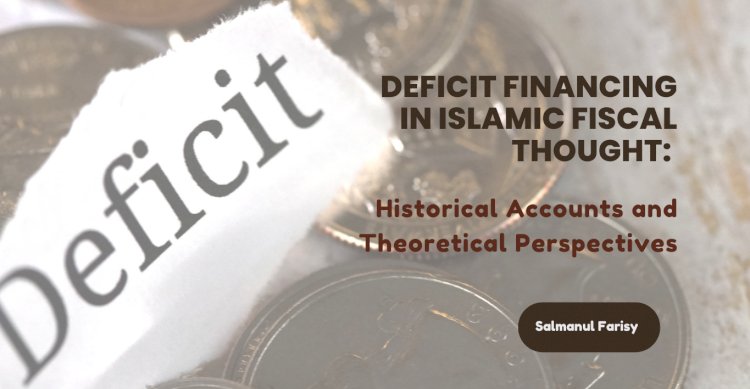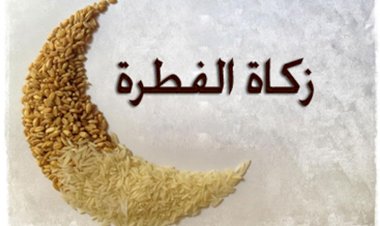Deficit Financing in Islamic Fiscal Thought: Historical Accounts and Theoretical Perspectives
Islamic Shariah fiscal policy emphasizes balanced budgeting as a core value. However, historical accounts of fiscal management by Islamic rulers show instances of both surplus and deficit financing as part of their economic practices.
During his governance in Medina, Prophet Muhammad (PBUH) borrowed on an interest-free basis, both in cash and kind, for public financing. This borrowing was used to fulfill the basic needs of the needy, repay maturing loans, and strengthen defensive capabilities. Despite the emphasis on balanced budgets, these borrowings were essential for maintaining societal welfare and security.
The Rashidun Caliphate, which followed the Prophet's era, experienced immense wealth creation through successful expeditions. This wealth allowed them to substantially balance the budget, avoiding the need for deficit financing. The prudent fiscal management of the Rashidun Caliphs ensured financial stability and avoided significant debts.
The Umayyad Caliphs encountered varying economic conditions, resulting in periods of balanced, surplus, and deficit financing. They borrowed money primarily for military purposes, covering current expenditure deficits, and feeding people during famines. The fiscal policy was adaptive, aligning with the economic needs and challenges of the state.
The Abbasid Caliphate, particularly in its initial centuries (132 A.H. to 232 A.H.), witnessed flourishing central administration and strong financial stability. Surpluses were common after meeting expenditures, and Caliphs often allocated surplus funds to private treasuries for long-term economic goals and reserves.
However, the later Abbasid period, marked by weak rulers and the dominance of Turkish military commanders, saw a decline in financial prudence. True authority shifted to army commanders, while financial matters were managed by wazirs. Caliphs focused on accumulating wealth in their private treasuries (Baitul-mal-al-Khas), often through land appropriations and customary gifts from public office seekers. During al-Muqtadir's succession, it was recorded that 40 million dinars were found in the private treasury of the Caliphs, highlighting significant wealth accumulation.
The financial imbalance during this period posed risks to the budget, primarily due to increased current expenditures. The public treasury often faced depletion while the royalty lived in opulence. This imbalance led to delays in army salaries, resulting in protests and occasional riots in Baghdad, the capital city.
Emergence of Public Borrowing and Budgetary Planning
Siddiqi's records indicate that the first reports of public borrowing in Islam emerged during the reign of the eighteenth Abbasid Caliph, al-Muqtadir, who ruled from 295 A.H. to 320 A.H. (908 A.D. to 932 A.D.). Siddiqi documented nine instances of public borrowing from the period spanning 300 A.H. to 333 A.H. He did not cover later periods, as the Islamic world had divided into numerous separate rulers and financial systems. This correlates with the observation of Tuma Elias that balancing the budget became a prerequisite for the position of minister or wazir in the early 10th century.
Elias noted that while there were detailed statements of expenditure and revenue in the early centuries, comprehensive budget planning—detailing revenue and expenditure estimates in advance of the fiscal year—only appeared in the later days of al-Mu’tadid in 279 A.H. (892 A.D.). The concept of balancing the budget did not emerge until the late second and early third centuries of the Hijrah (8th-9th century A.D.).
During this period, daily expenditure was computed on a daily or monthly basis, and taxes paid were delivered or accounted for similarly. Elias argued that this arrangement suggests a short-term economic perspective of the administration, with a lack of long-term planning. Ministers were obliged to generate enough revenue to meet the immediate economic needs of the caliph. This indicates highly active government budget planning as a measure to offset revenue deficits caused by unplanned expenditures.
Siddiqi also highlighted instances of interest-based loans at the rate of one dirham per dinar in practice during the early fourth century. However, he questioned the authority of some sources in this context.
Strategies to Offset Fiscal Deficits
Islamic rulers employed various strategies to offset fiscal deficits. These included generating revenue through the disinvestment of public property and unproductive lands, and securing advance payments from traders for grains collected as taxes. Additionally, expenditure reduction and savings measures were practiced to address budgetary shortfalls. Elias recorded one such instance:
"Ubayd Allah b. Sulayman, a senior official of the Abbasid Caliphate who served as vizier for ten years ordered that Fridays and Tuesdays be days of rest in which all the ministries would be closed, including the bureau of payments. Since the officers would not be required to attend on these days, their salaries would be reduced proportionately. By this means a saving of 457,900 dinars a year was possible, which was transmitted to the Bayt al-mal al-khassah (privy purse), to be spent on festivals, military campaigns, building maintenance, emergencies, special emissaries, and ransoms."
During the period of Ali b. Isa (315 A.H./927 A.D.), an elaborate system of expenditure reduction was implemented. This included curtailing annual payments to officials, military salaries, pensions for children, and other unnecessary extravagances. Some caliphs also demonstrated remarkable self-restraint by cutting their own allowances.
The accountability of financial management was further reinforced through investigations into the offices of ex-ministers, making the ministry more accountable in budget management. Local governors and tax farmers, responsible for collecting taxes, were audited and required to justify their economic policies to the central ministry. Tax collection became highly scrutinized, and there were instances where tax collectors borrowed funds to finance the government's share to avoid confiscation of their wealth. Despite some records of abuse of power, these measures can be seen as efforts to ensure proper taxation and address fiscal deficits effectively.
The fiscal deficit in Islamic states often resulted from failures on the revenue side, coupled with significant increases in committed expenditures. Ibn Khaldun (732 A.H /1332 A.D.) noted that extravagance and high revenue expenditure, which were sustainable during times of prosperity, became unmanageable during periods of deficit. This often forced the government to curtail the expenditures of officials, which in turn negatively affected the officials and the military.
Ibn Khaldun also criticized rulers for responding to deficits by increasing tax rates to boost revenue, a strategy that often backfired, leading to further declines in revenue. Muslim scholars like Abu Yala al-Farra (990-1066) and Al-Mawardi (974-1058) condemned the practice of increasing taxes to offset borrowing costs. Al-Mawardi advised that deficit financing should be a last resort in times of fiscal vulnerability, considering that governments might fail to repay loans or impose extra taxation. The timelines of these scholars are notable in this regard, and severe criticism of public borrowing by jurists such as Imam al-Haramain al-Juwaini (419-478 A.H.) indicates the deteriorating fiscal conditions of the Abbasid Caliphate during the fourth century A.H.
Elias analyzed three main causes of fiscal deficit:
- Low Expenditures on Production and Transportation: Expenditures aimed at incentivizing production and facilitating transportation were insufficient.
- Large Expenditures on Free Distribution: Financial trouble often arose from large expenditures for the free distribution of money and goods, such as garments, during occasional ceremonies of accession to the caliphate and pilgrimage seasons. Large amounts were also distributed as rewards and royalties to poets, entertainers, and other companions of the caliph.
- Generosity Leading to Financial Burden: Elias condemned the practice of excessive generosity, noting that it increased the financial burden on the state. For example, during his pilgrimage in 159/776, Al-Mahdi distributed approximately 30.5 million dinars (likely dirhams, equivalent to about one-sixth of that amount) and provided 150,000 garments in Mecca and Medina. While this generous expenditure garnered goodwill, it led to financial difficulties. Such spending, manageable during times of prosperity and surplus, evolved into an anticipated tradition for the caliph or his representative, irrespective of the financial circumstances, often resulting in a significant burden during periods of deficit.
These practices highlight the complex interplay between revenue generation, expenditure management, and the political and social expectations of generosity, which collectively influenced the fiscal stability of Islamic states.
Conclusion
In sum, while normative Islamic economic thought on public finance advocated for balancing the budget by avoiding both excessive deficits and surpluses, historical accounts show varied approaches to fiscal management. During later periods, efforts were made to manage fiscal deficits through borrowing and reducing revenue expenditures and pensions. Measures were taken to ensure proper taxation through active budget planning and auditing of ministers and tax collectors, increasing their accountability to secure government revenue. However, there were exceptions where extra taxation was imposed, and abuses of power and resource misallocations occurred due to corrupt and extravagant officials. Some resorted to borrowing funds to offset these expenditures. It can be argued that no single policy was uniformly applied across the entire empire, although certain patterns in the economic behavior of governments were evident.
References
- Siddiqi, Mohammad N. "An Overview of Public Borrowing in Early Islamic History." Islamic Economic Studies 2, no. 2 (1995): 74-95.
- Tuma, Elias H. “Early Arab Economic Policies (1st/7th—4th/10th Centuries).” pp. 2-5.
This research article is part of the author's dissertation for completing a P.G. at Darul Huda Islamic University.
Salmanul Farisy, research scholar in the Department of Islamic Economics and Finance at DHIU, Chemm
Disclaimer
The views expressed in this article are the author’s own and do not necessarily mirror Islamonweb’s editorial stance.
























Leave A Comment